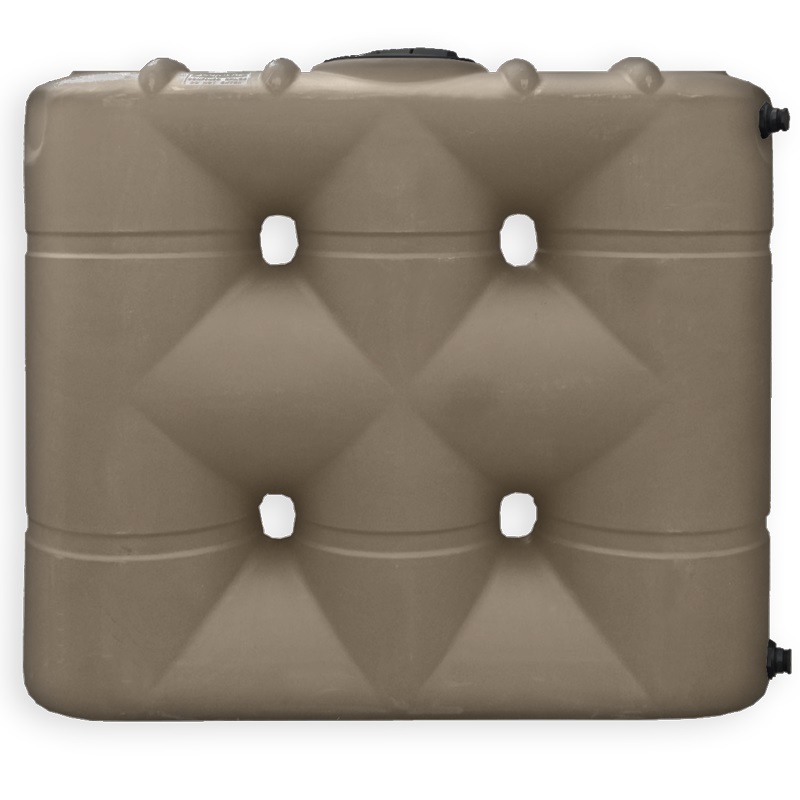Slimline Water Tanks: Space-Saving Solutions for Little Residences
Slimline Water Tanks: Space-Saving Solutions for Little Residences
Blog Article
Discovering the Different Uses of Rain Storage Tanks for Residential and Commercial Features
As the international emphasis on sustainable living methods remains to heighten, the usage of rainwater tanks in both property and business setups has actually become a significant remedy. These storage tanks supply a reservoir for rainwater harvesting, offering a myriad of potential applications that extend far past mere storage. From watering to bathroom flushing and landscape design, the adaptability of rainwater containers is substantial. Their combination right into commercial residential properties opens up a world of opportunities for eco aware services. The multifaceted uses rain storage tanks present a compelling instance for their fostering, not just as a useful water-saving action however likewise as a testament to responsible resource monitoring.
Advantages of Using Rain Containers
Using rainwater storage tanks supplies many advantages for both houses and communities in terms of water preservation and sustainability. Among the crucial advantages of utilizing rain storage tanks is the significant decrease in dependence on keys supply of water - Slimline water tanks. By capturing and keeping rainwater for later use, individuals and areas can lower their demand for treated water, inevitably alleviating the concern on water treatment facilities and reducing energy consumption associated with water transport and treatment
In addition, rain collecting with tanks supplies a dependable alternative water resource during times of water restrictions or lacks. This saved rainwater can be utilized for various non-potable objectives such as irrigation, purging bathrooms, and washing clothing, decreasing the strain on typical water resources. Furthermore, making use of rainwater containers can cause set you back savings for both households and communities by lowering water bills and lowering the need for pricey framework expansions to fulfill expanding water needs.
Basically, the use of rainwater tanks provides a sustainable and environmentally friendly approach to water administration, profiting both specific customers and the broader area in terms of water preservation, cost-efficiency, and durability.
Rain Tank Use in Irrigation
Given the benefits of rainwater containers in conserving water resources and reducing dependence on mains water, a considerable application exists in utilizing stored rainwater for irrigation functions - Slimline water tanks. Rainwater gathering systems can effectively accumulate and store rain, offering a sustainable water source for watering yards, lawns, and agricultural areas. By utilizing rainwater for irrigation, homeowner can minimize their dependence on treated water sources, causing set you back financial savings and environmental benefits

Among the key benefits of utilizing rainwater for irrigation is its purity. Rainwater is naturally soft and without the chemicals and additives usually discovered in keys water, making it excellent for nourishing plants without the threat of dangerous results. Furthermore, rainwater is at ambient temperature level, which can profit plant development by preventing temperature level browse around this site shocks that can take place with cool mains water.
Rain Tanks for Commode Flushing

Applying rain tanks for toilet flushing is an economical and eco friendly technique that can be conveniently integrated into both residential and commercial residential or commercial properties. The stored rainwater can be used to flush bathrooms by attaching the container to the existing plumbing system. This basic yet reliable option can significantly lower water intake in a structure, especially in locations where water deficiency is a concern.

Integrating Rainwater Containers in Landscape Design
These storage tanks can capture and keep rain overflow from roof coverings, which can then be used for watering gardens, grass, and plants. By making use of rain for watering objectives, building owners can decrease their reliance on local water sources, leading to cost financial savings and conservation of precious water resources.
In enhancement to supplying a lasting water source for landscape design needs, rainwater storage tanks can additionally aid in managing stormwater overflow. By recording rain that would otherwise stream right into storm drains pipes, these storage tanks can reduce erosion, minimize flooding dangers, and protect against pollution of all-natural water bodies. Additionally, integrating rainwater tanks in landscaping can add to the general aesthetic charm of the building, showcasing a commitment to ecological stewardship.
Business Applications of Rain Tanks
Making use of rainwater containers in business setups provides a lasting service for water management and conservation, profiting businesses and the atmosphere alike. Industrial applications of rainwater containers vary and progressively popular because of the expense savings and ecological benefits they supply. One key industrial use is for irrigation purposes, where gathered rain can be made use of to water landscaping, gardens, and farming areas surrounding industrial residential or commercial properties. This can result in substantial decreases in water expenses and reliance on local water sources.
Furthermore, rain storage tanks can be incorporated into the fire suppression systems of commercial buildings. By having a specialized water resource for firefighting functions, businesses can enhance their fire precaution and possibly decrease insurance policy costs. Furthermore, rainwater collected in storage tanks can be dealt with and used for non-potable functions within business residential properties, such as flushing toilets, cleaning, and cooling systems. This not only preserves freshwater sources yet additionally lowers operating expense for businesses. In general, the consolidation of rainwater tanks in industrial settings presents a useful and ecologically responsible approach to water monitoring.
Conclusion
To conclude, rain storage tanks supply many advantages for both domestic and industrial buildings. From watering to toilet click to find out more flushing and landscape design, making use of rainwater tanks can aid conserve water resources and decrease water bills. Additionally, integrating rainwater tanks in industrial setups can lead to substantial price savings and ecological advantages. In general, the flexibility and sustainability of rain storage tanks make them a useful financial investment for any type of residential or commercial property owner aiming to raise water performance.
Report this page